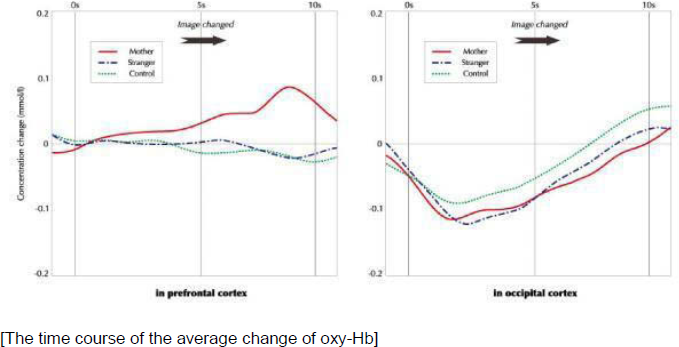No CrossRef data available.
Article contents
Hemodynamic activation in infant's prefrontal and occipital cortices when viewing maternal facial expressions: A near-infrared spectroscopic study
Published online by Cambridge University Press: 16 April 2020
Abstract
Considering that infants are brought up by their mothers, we believe that they learn emotional interaction and facial expressions from their mothers. However, brain activation in infants while they view maternal facial expressions has rarely been studied.
This preliminary study aimed at investigating the peculiarity of infants’ perception of maternal facial expressions by measuring hemodynamic activations in an infant's brain.
Participant was one healthy 6-month-old infant. Facial expression images of 2 persons (participant's mother, an unknown woman [stranger]) were used as test stimuli and 2 vegetable images were used as control. In each trial, initially, neutral face of the persons or vegetable was presented to the child, followed by her expressional face or another vegetable. While trials, we recorded the hemodynamic responses of his prefrontal and occipital cortices using near-infrared spectroscopy.
The oxygenated hemoglobin (oxy-Hb) concentration was calculated. In the prefrontal cortex, the levels showed a greater increase when viewing the mother's expressions than the stranger's expression or control. In contrast, no difference was found in the occipital cortex.
Fig. 1
Our findings suggest that infants are peculiarly sensitive to their mothers’ expressions. Thus, mother-infant interaction may appear important in the development of interpersonal recognition.
- Type
- P01-436
- Information
- European Psychiatry , Volume 26 , Issue S2: Abstracts of the 19th European Congress of Psychiatry , March 2011 , pp. 440
- Copyright
- Copyright © European Psychiatric Association2011





Comments
No Comments have been published for this article.